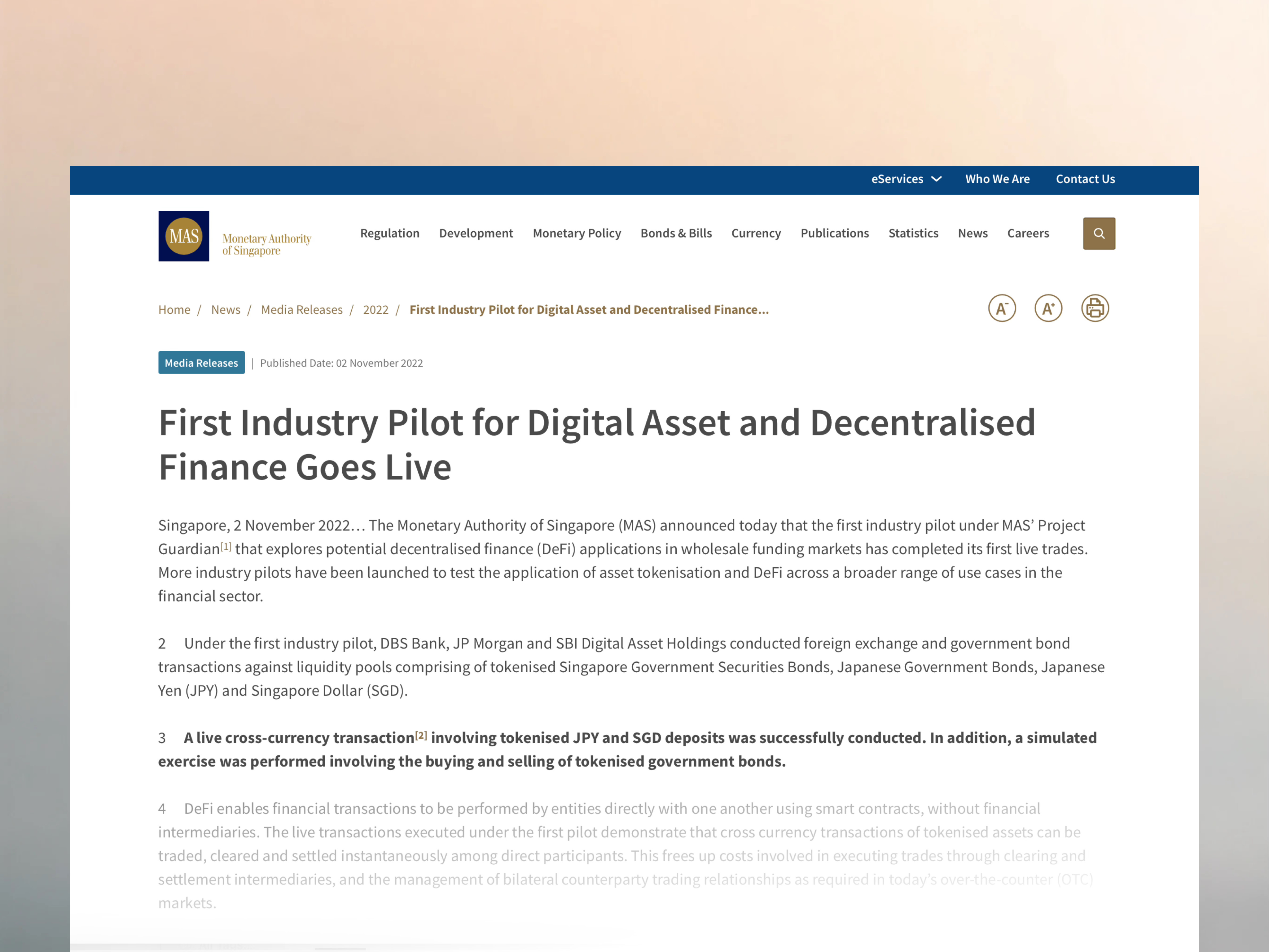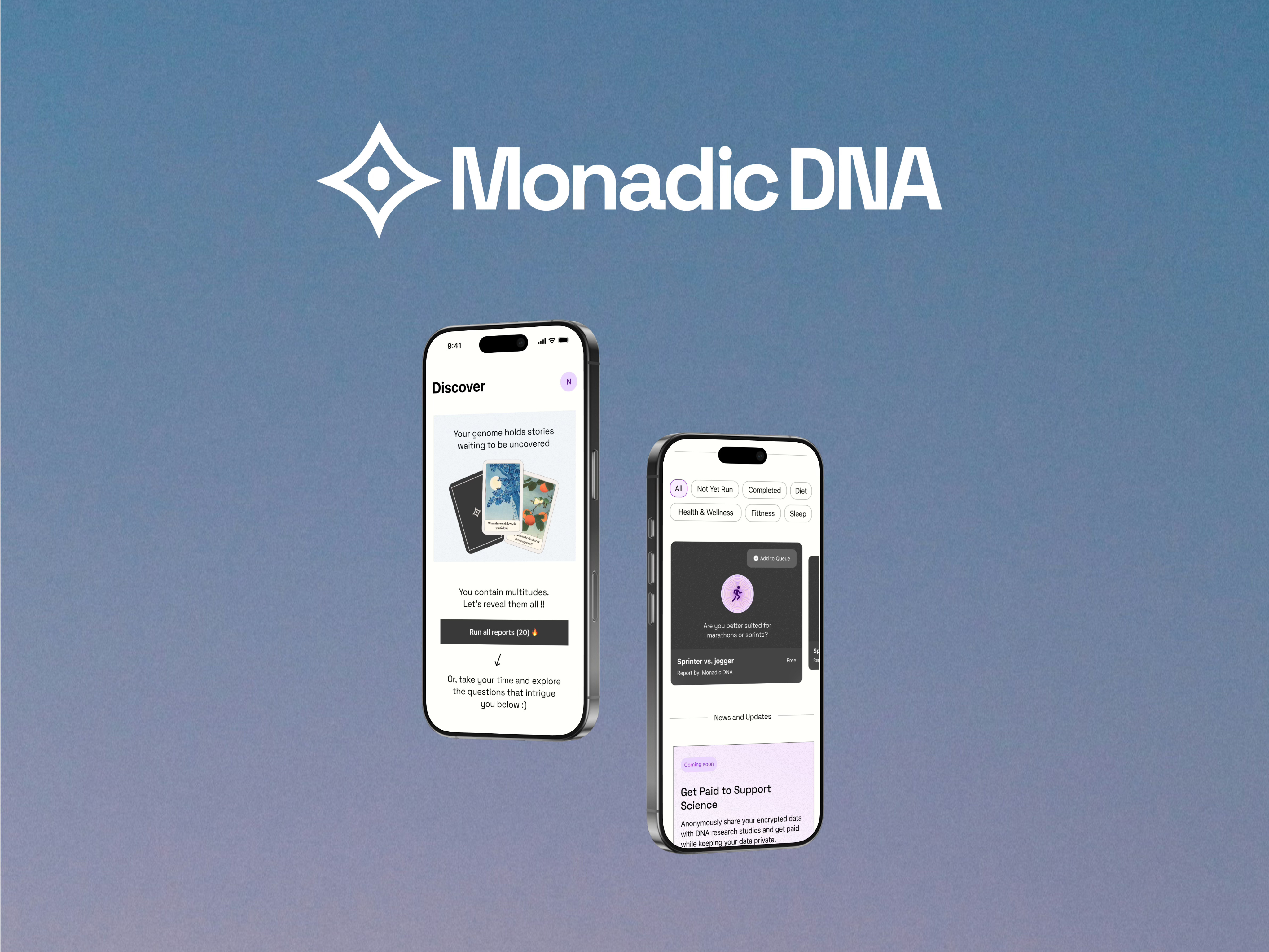2019 - 2025
How Open-Source UX Sharpens Your Ability to Find Signal in the Noise
Lessons and musings from open-source software land
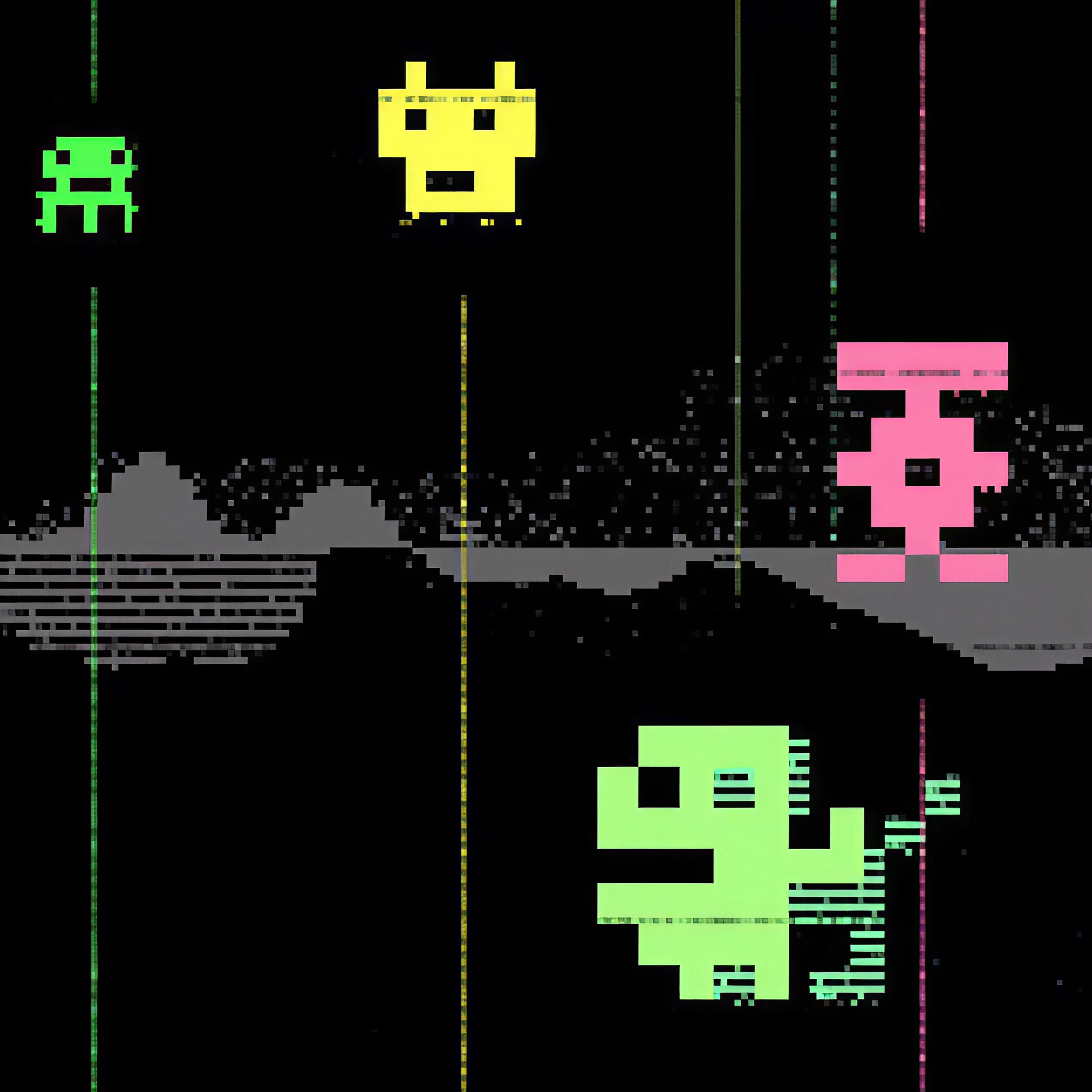
Much of what has shaped me as a product designer comes from working on open-source projects.
I've worked on maintaining and launching blockchain wallets, analytics tools, research tools, and developer platforms supported by everything from peer-to-peer communities to grants and client partnerships.Designing in these environments comes with an added etiquette of maintaining legibility for contributors. At the same time, the products themselves serve a wide spectrum of users from technical participants, to newcomers and business stakeholders.
Balancing Inputs
Feedback arrives constantly from many directions:
- GitHub issues from technically fluent contributors, usually phrased as precise feature requests.
- Support tickets from newcomers, often conveying confusion or hesitation.
- Community discussions spread across forums and chats.
- Stakeholder feedback, often focused on demonstrating progress and measurable outcomes.
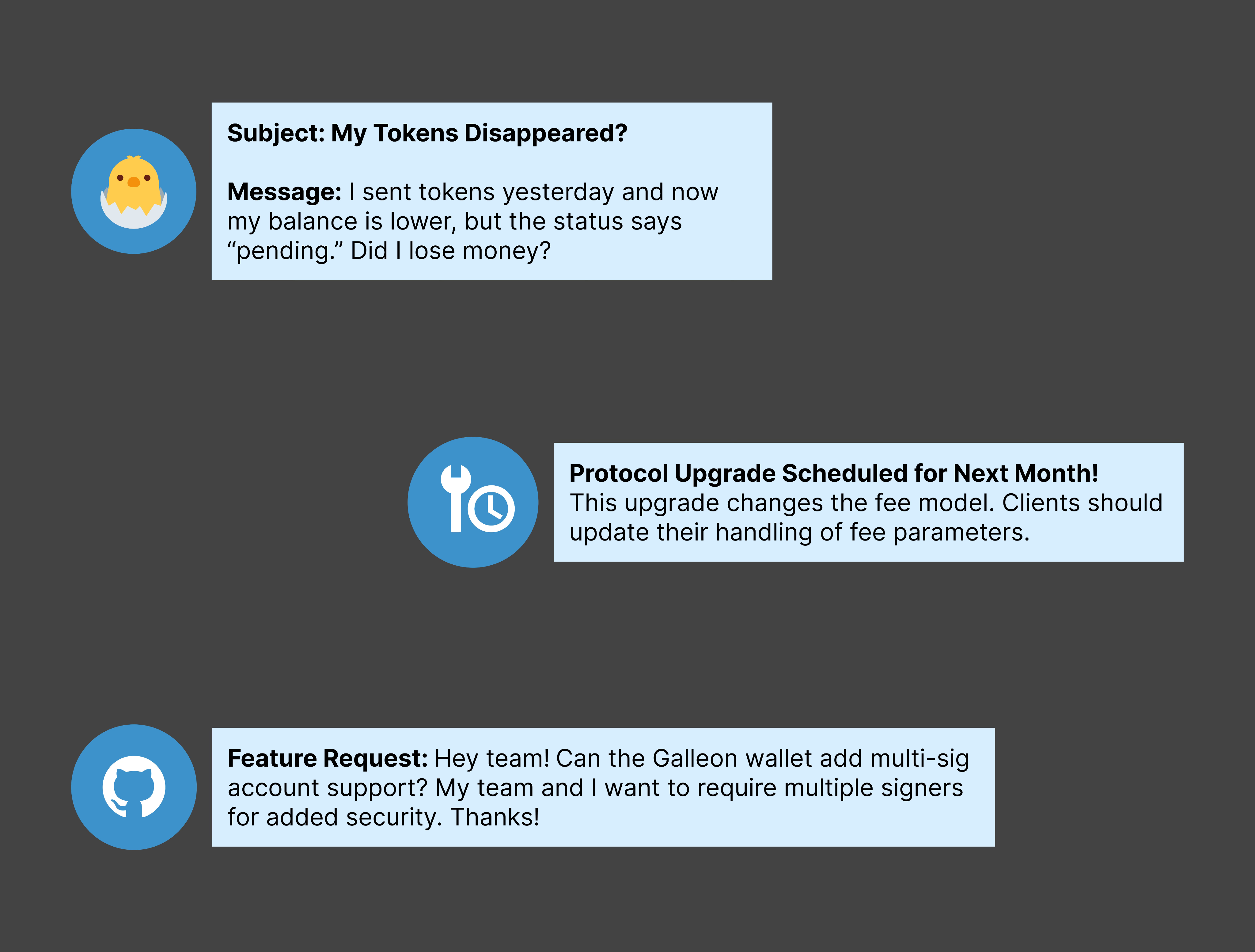
Fig. A: Feedback Examples
The role of design here is to interpret the signal, balance competing needs, and keep the product moving forward with empathy for the users. (Especially when foundational shifts like protocol upgrades call for an entire reshaping of the interface!)Customer support tickets ended up being really useful user feedback signal as a way to figure out where the designs needed more work.
Establishing design patterns in early blockchain UX
I first started designing for blockchain wallets in 2019 when many UX patterns were still being experimented with. There is a recurring design tension that I think is still relevant:
- Do we abstract away the technical complexity to make the product approachable?
- Or do we surface complexity so users can understand and trust what’s happening underneath?
Neither approach works on its own. The key is deciding which parts to simplify or make metaphors for or leave visible and educate. These decisions help users create the mental models they need to understand the technology itself.
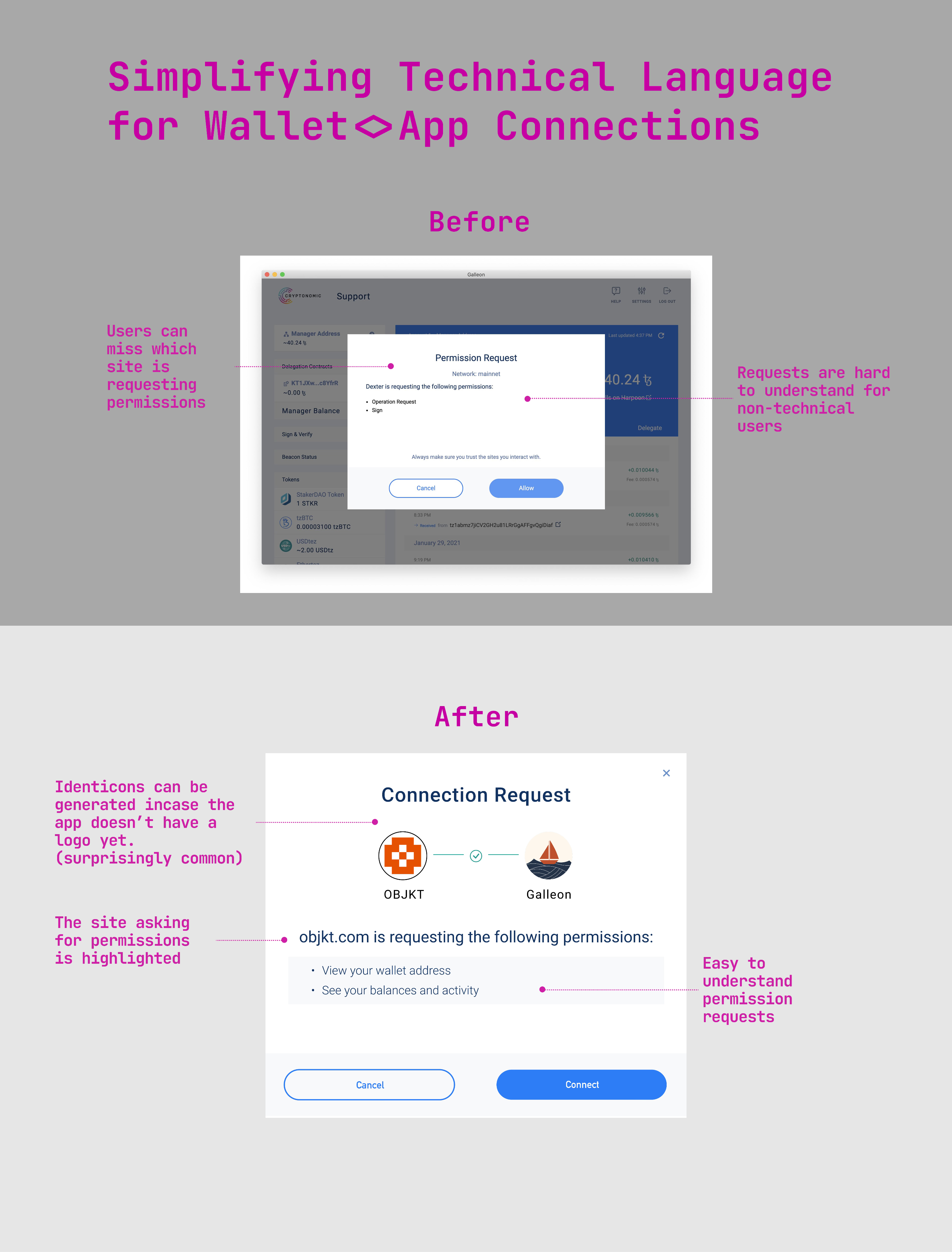
Fig. B: Galleon Wallet Redesign

Fig. C: Galleon Mobile app security flows
2019 - 2025
How Open-Source UX Sharpens Your Ability to Find Signal in the Noise
Lessons and musings from open-source software land

Much of what has shaped me as a product designer comes from working on open-source projects.
I've worked on maintaining and launching blockchain wallets, analytics tools, research tools, and developer platforms supported by everything from peer-to-peer communities to grants and client partnerships.Designing in these environments comes with an added etiquette of maintaining legibility for contributors. At the same time, the products themselves serve a wide spectrum of users from technical participants, to newcomers and business stakeholders.
Balancing Inputs
Feedback arrives constantly from many directions:
- GitHub issues from technically fluent contributors, usually phrased as precise feature requests.
- Support tickets from newcomers, often conveying confusion or hesitation.
- Community discussions spread across forums and chats.
- Stakeholder feedback, often focused on demonstrating progress and measurable outcomes.

Fig. A: Feedback Examples
The role of design here is to interpret the signal, balance competing needs, and keep the product moving forward with empathy for the users. (Especially when foundational shifts like protocol upgrades call for an entire reshaping of the interface!)Customer support tickets ended up being really useful user feedback signal as a way to figure out where the designs needed more work.
Establishing design patterns in early blockchain UX
I first started designing for blockchain wallets in 2019 when many UX patterns were still being experimented with. There is a recurring design tension that I think is still relevant:
- Do we abstract away the technical complexity to make the product approachable?
- Or do we surface complexity so users can understand and trust what’s happening underneath?
Neither approach works on its own. The key is deciding which parts to simplify or make metaphors for or leave visible and educate. These decisions help users create the mental models they need to understand the technology itself.

Fig. B: Galleon Wallet Redesign

Fig. C: Galleon Mobile app security flows
2019 - 2025
How Open-Source UX Sharpens Your Ability to Find Signal in the Noise
Lessons and musings from open-source software land

Much of what has shaped me as a product designer comes from working on open-source projects.
I've worked on maintaining and launching blockchain wallets, analytics tools, research tools, and developer platforms supported by everything from peer-to-peer communities to grants and client partnerships.Designing in these environments comes with an added etiquette of maintaining legibility for contributors. At the same time, the products themselves serve a wide spectrum of users from technical participants, to newcomers and business stakeholders.
Balancing Inputs
Feedback arrives constantly from many directions:
- GitHub issues from technically fluent contributors, usually phrased as precise feature requests.
- Support tickets from newcomers, often conveying confusion or hesitation.
- Community discussions spread across forums and chats.
- Stakeholder feedback, often focused on demonstrating progress and measurable outcomes.

Fig. A: Feedback Examples
The role of design here is to interpret the signal, balance competing needs, and keep the product moving forward with empathy for the users. (Especially when foundational shifts like protocol upgrades call for an entire reshaping of the interface!)Customer support tickets ended up being really useful user feedback signal as a way to figure out where the designs needed more work.
Establishing design patterns in early blockchain UX
I first started designing for blockchain wallets in 2019 when many UX patterns were still being experimented with. There is a recurring design tension that I think is still relevant:
- Do we abstract away the technical complexity to make the product approachable?
- Or do we surface complexity so users can understand and trust what’s happening underneath?
Neither approach works on its own. The key is deciding which parts to simplify or make metaphors for or leave visible and educate. These decisions help users create the mental models they need to understand the technology itself.

Fig. B: Galleon Wallet Redesign

Fig. C: Galleon Mobile app security flows

